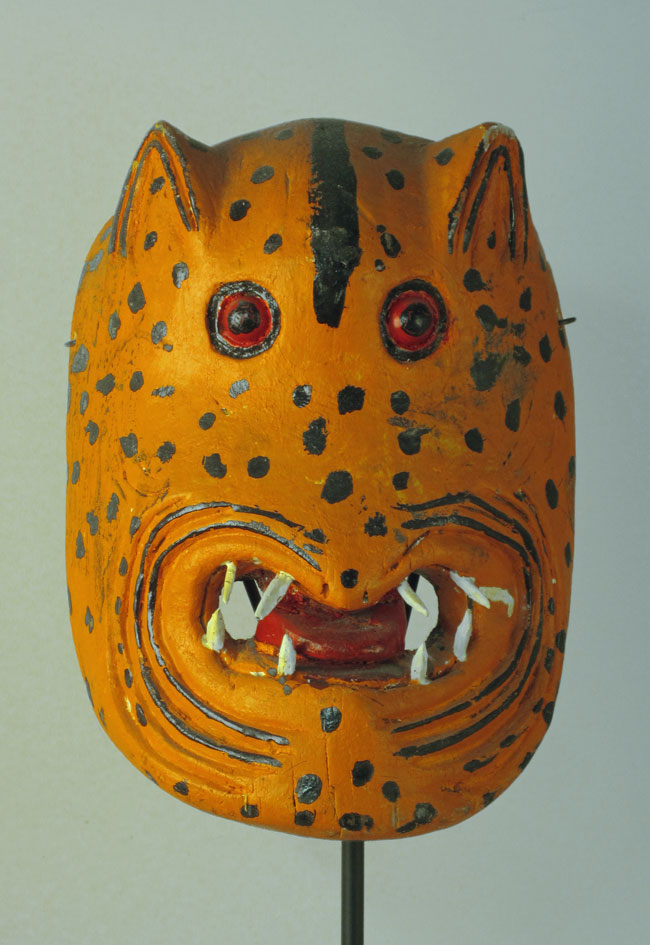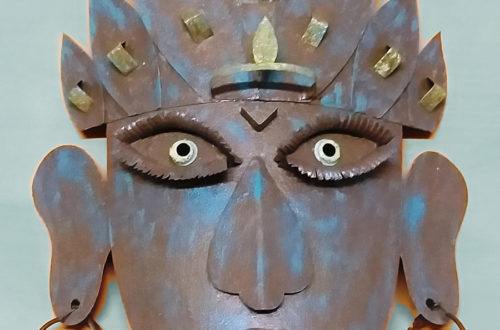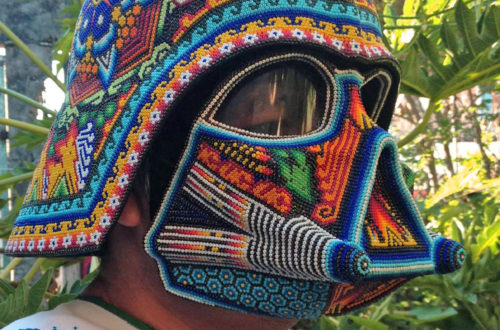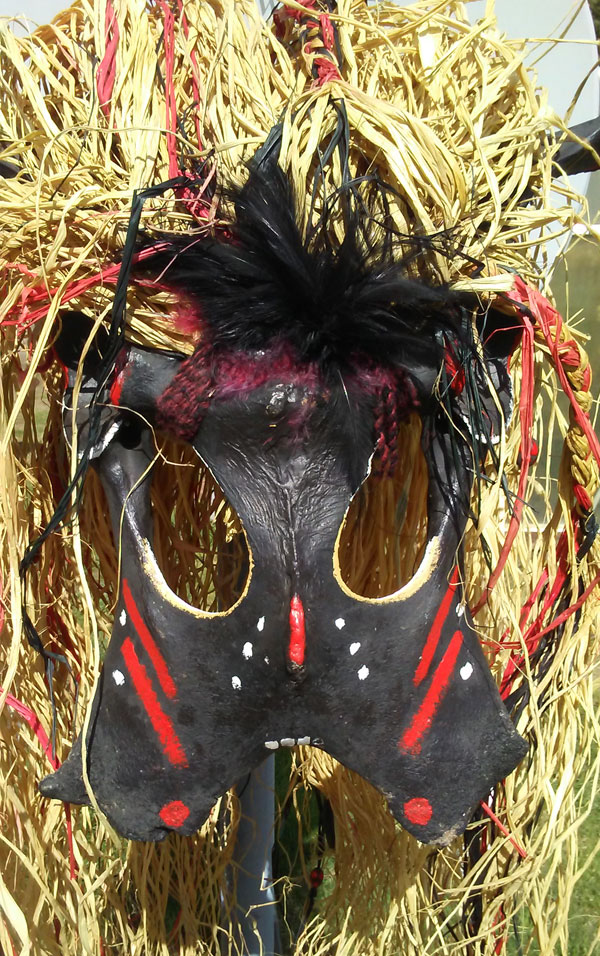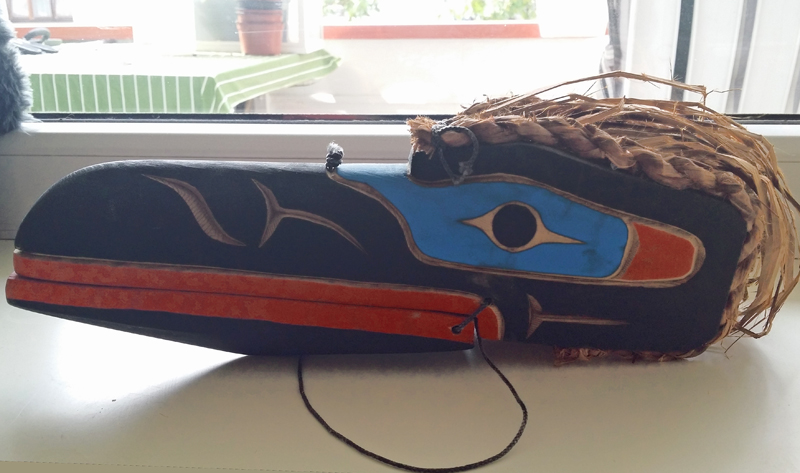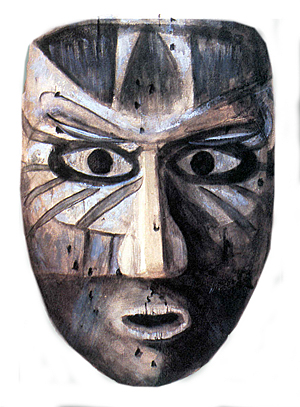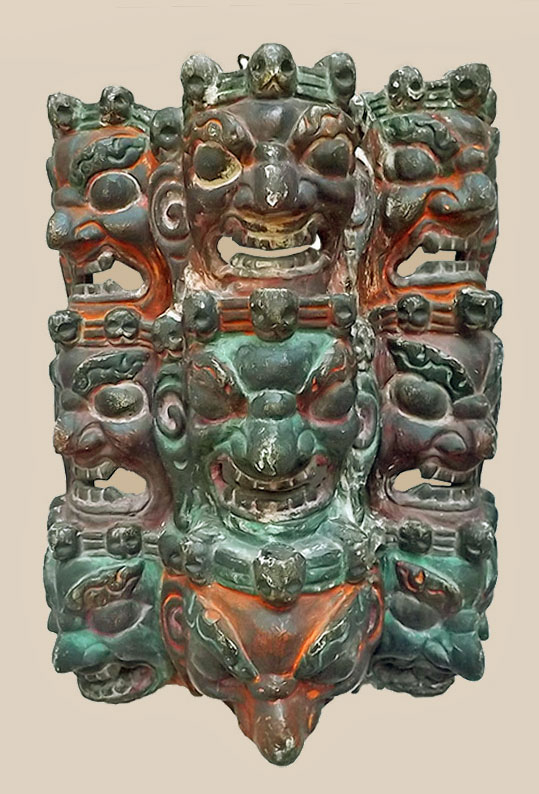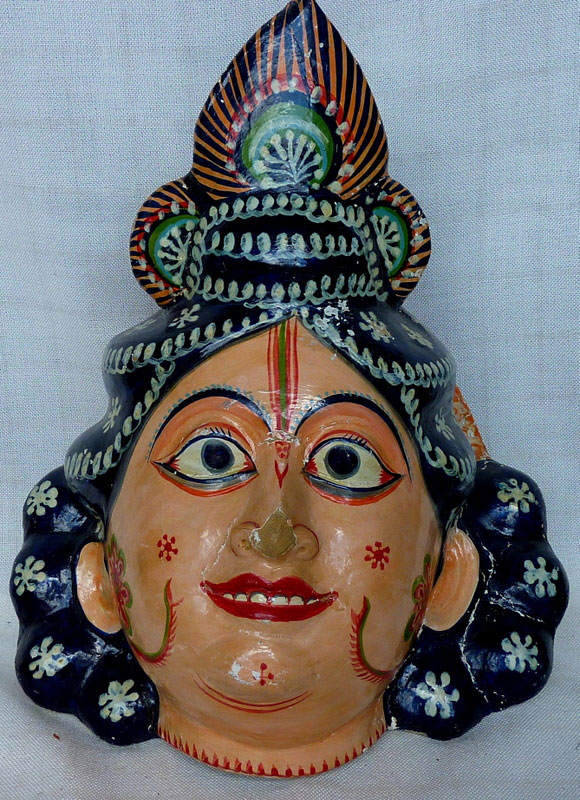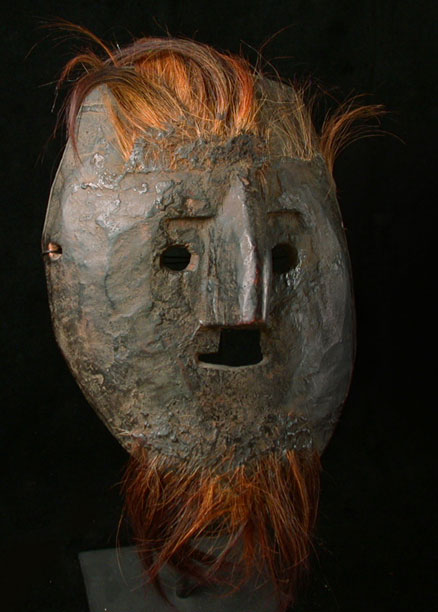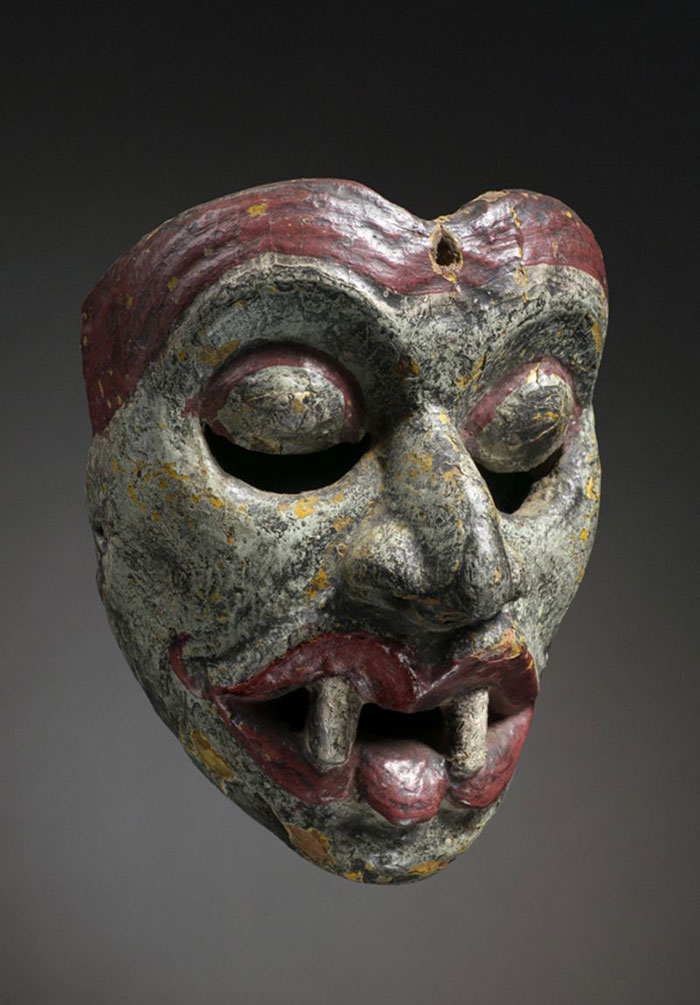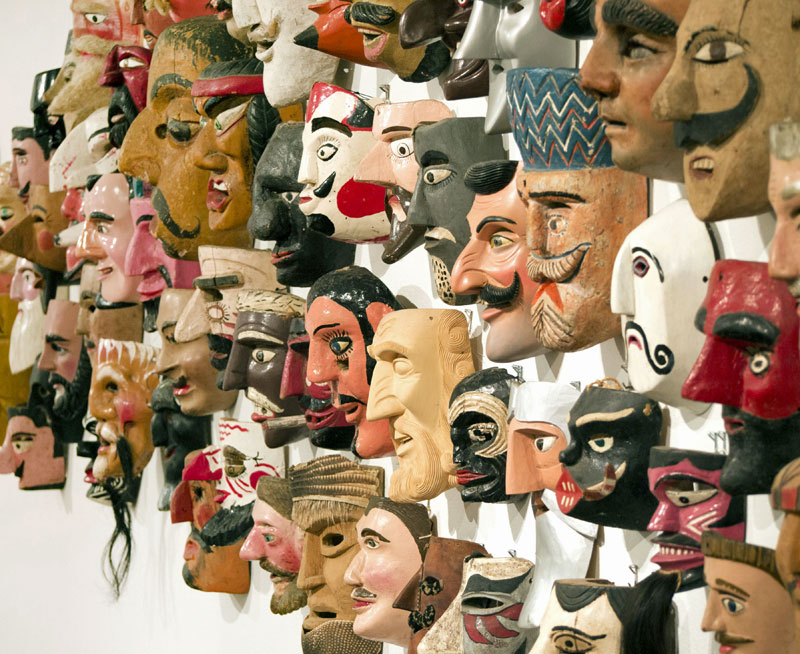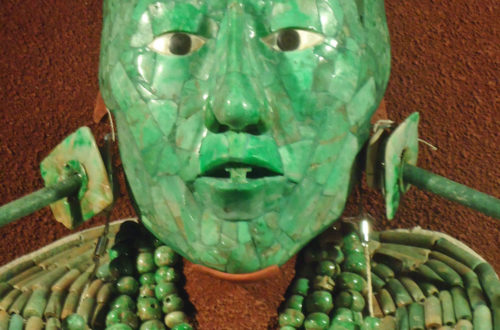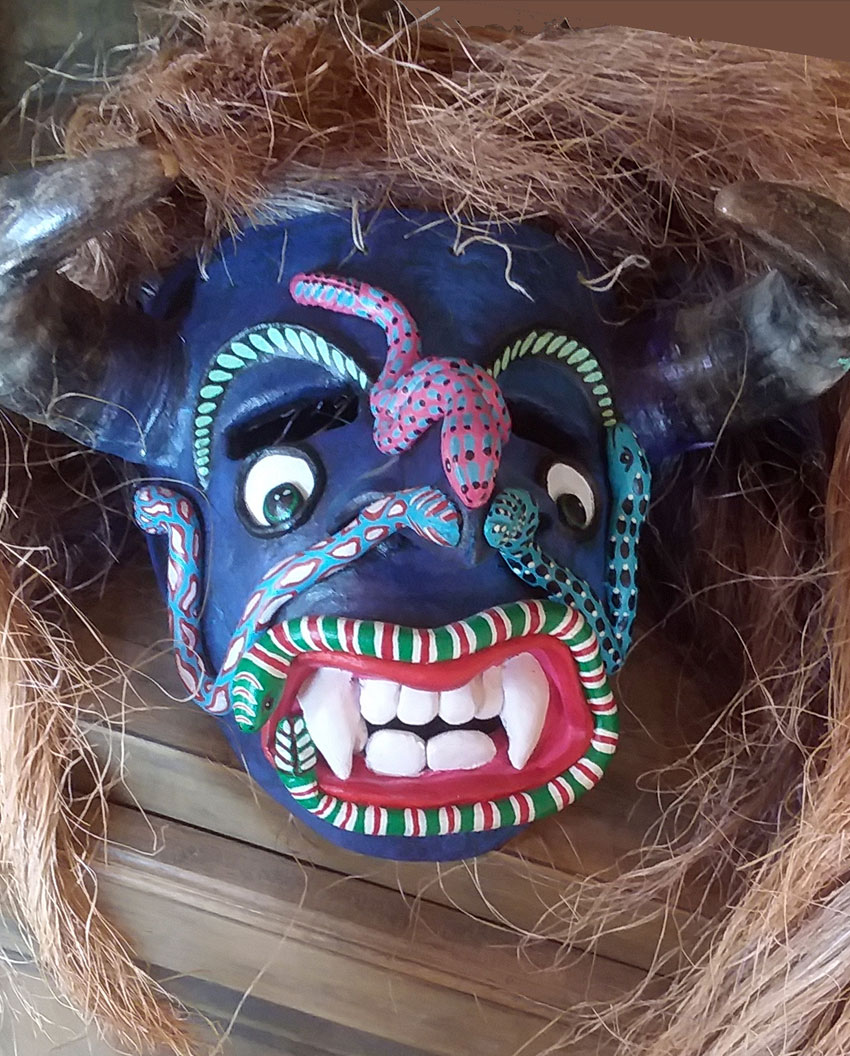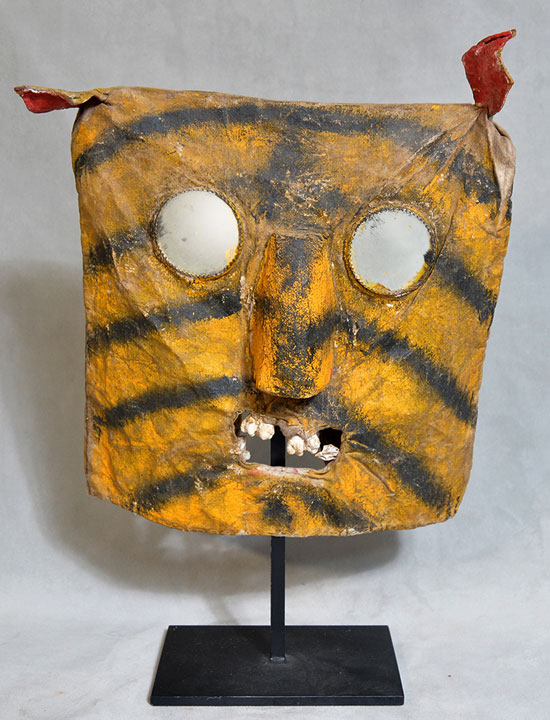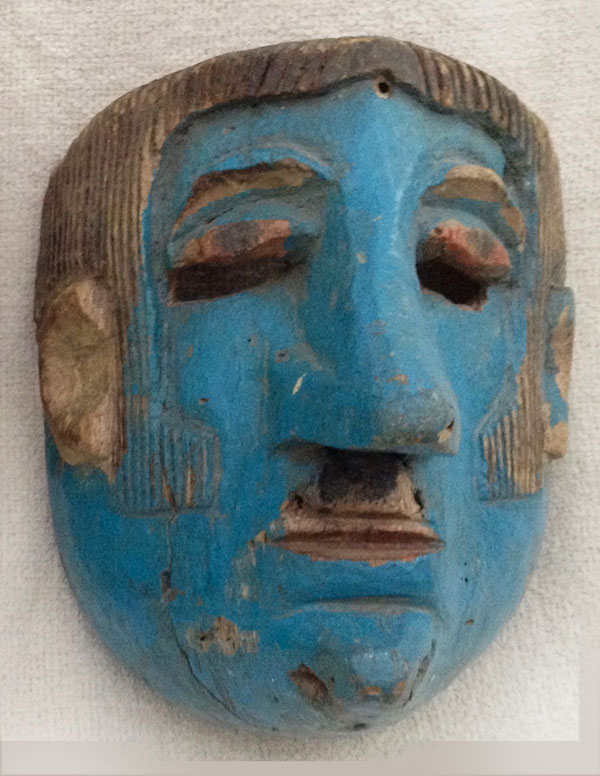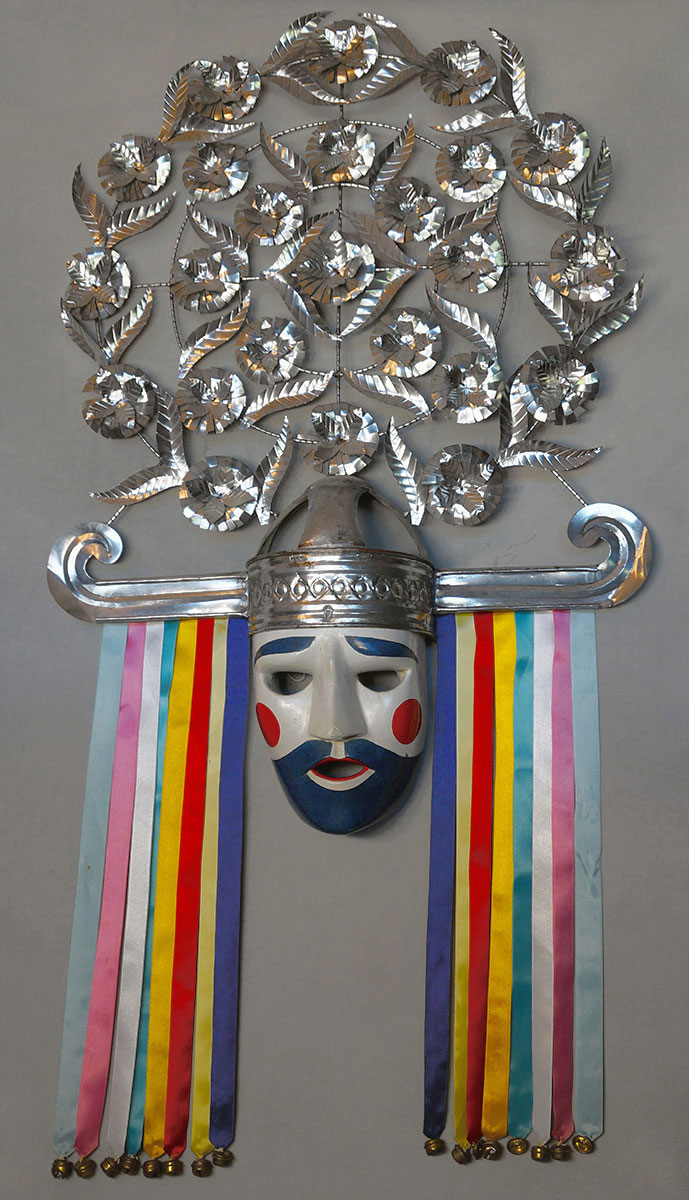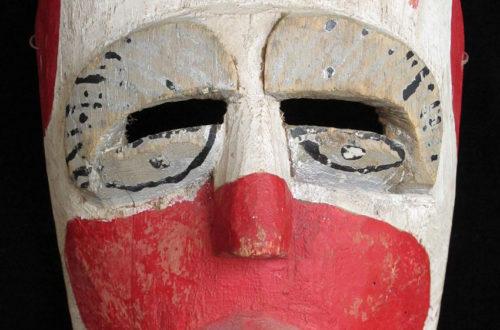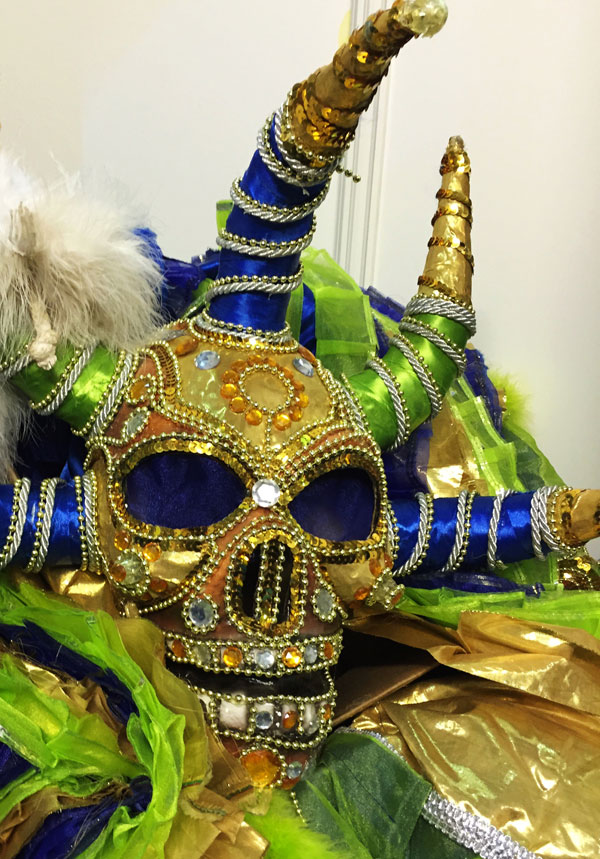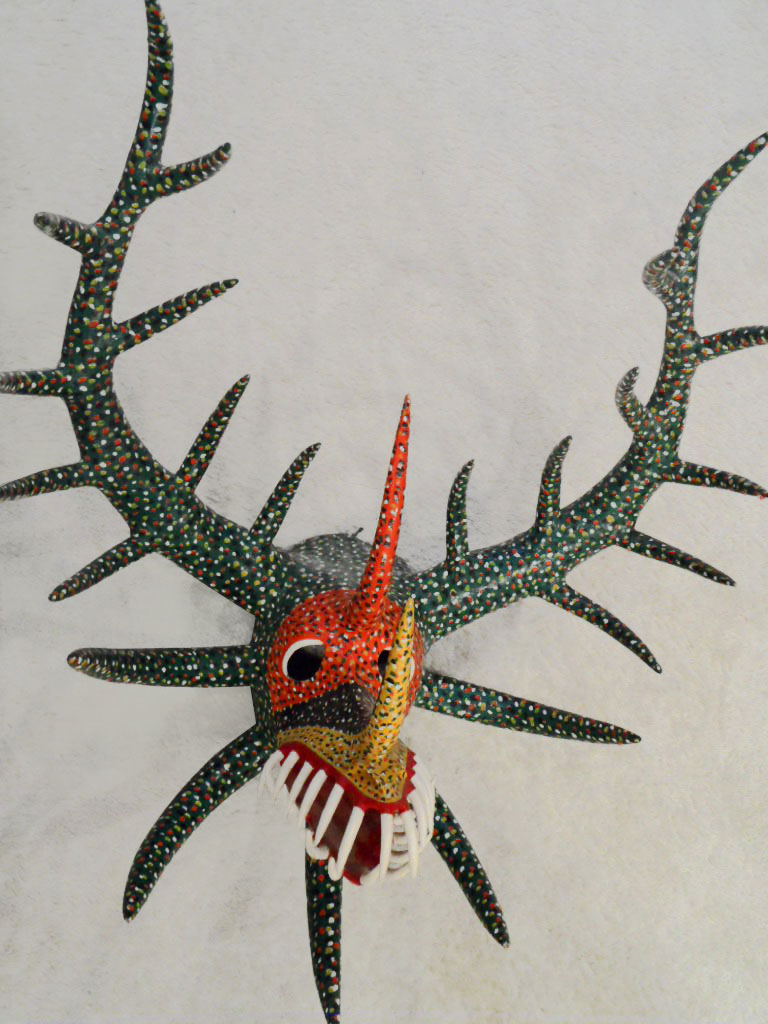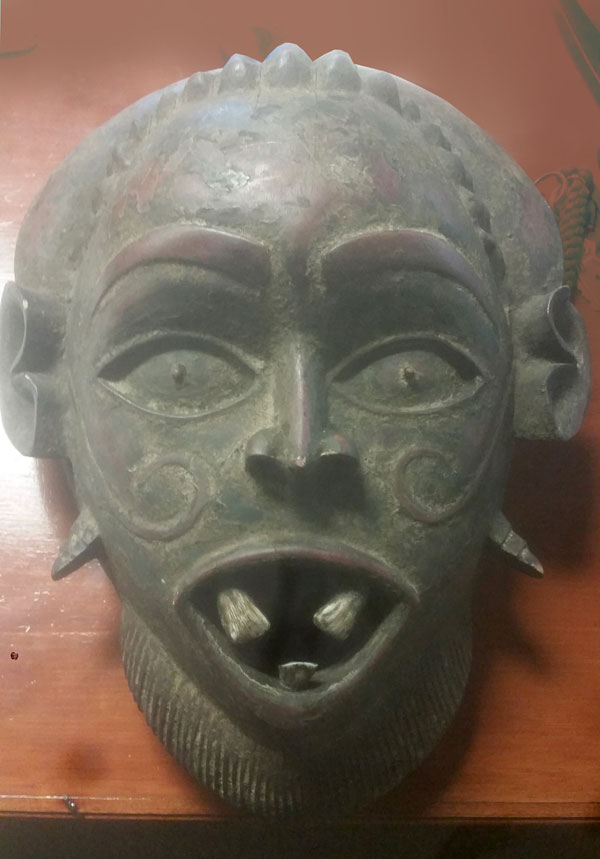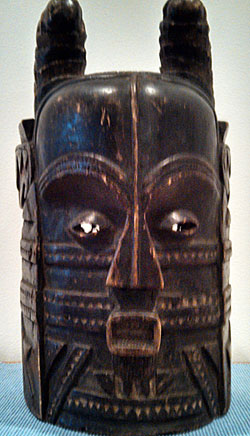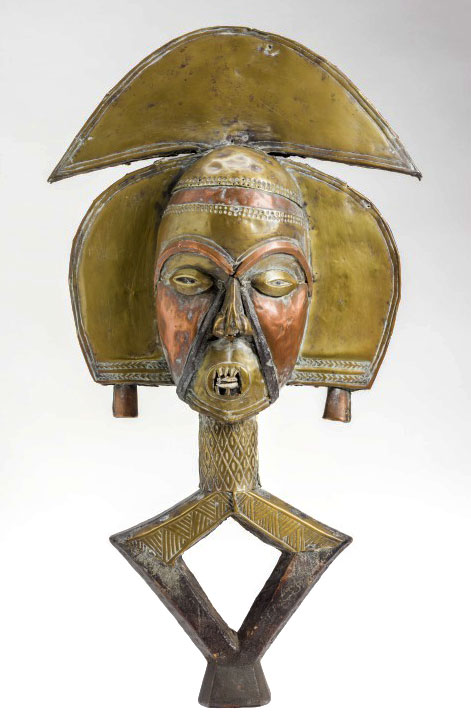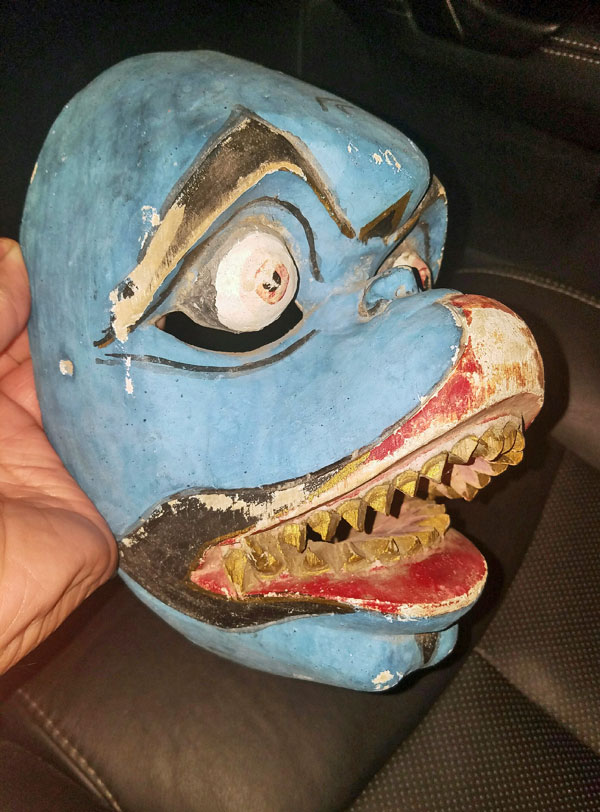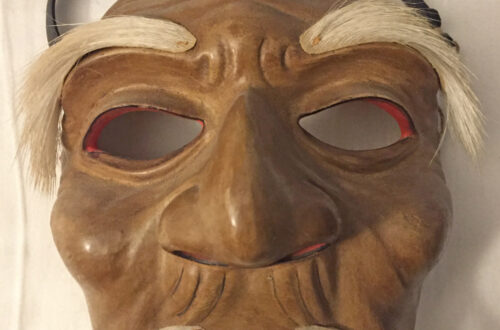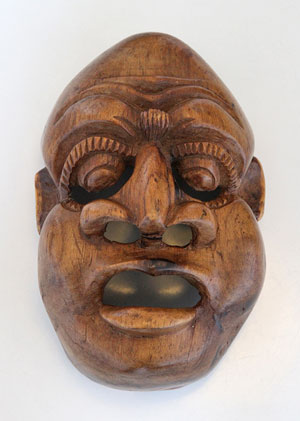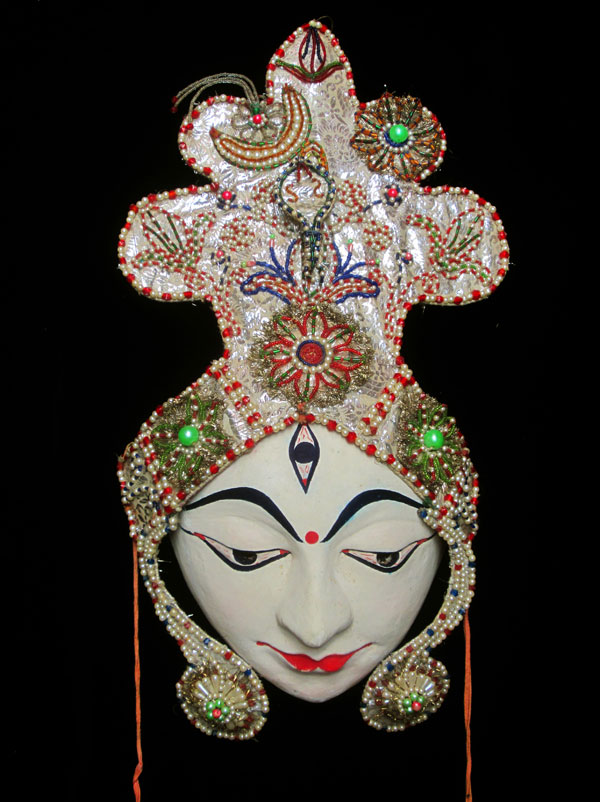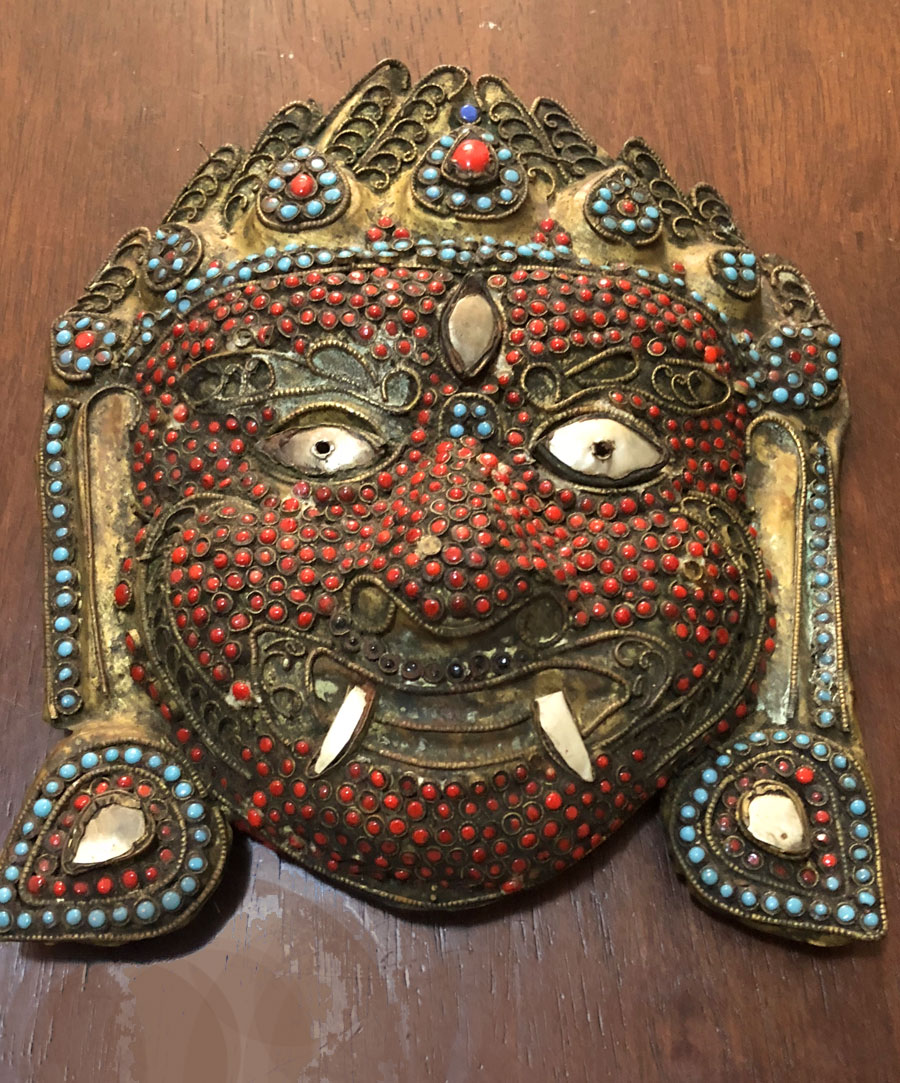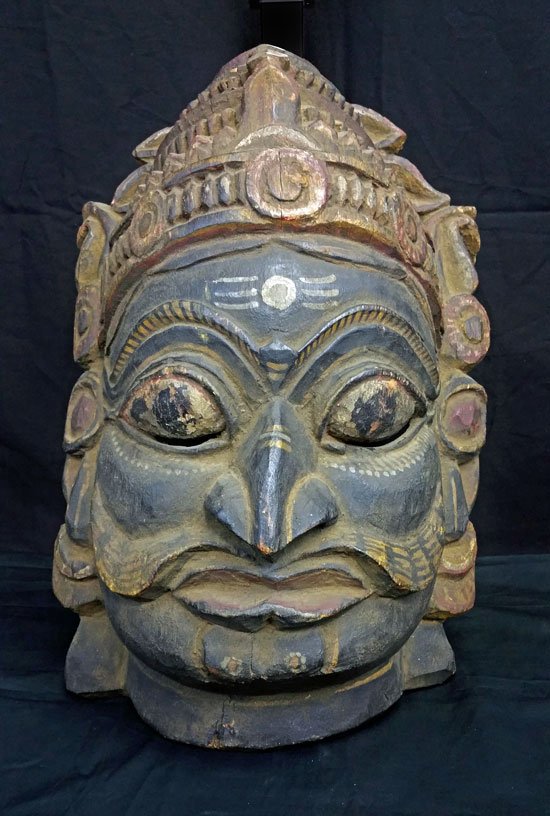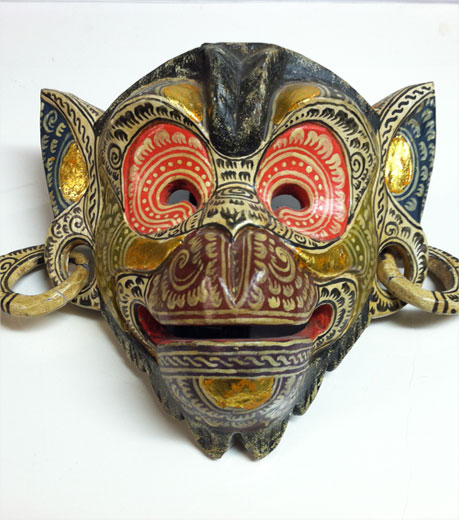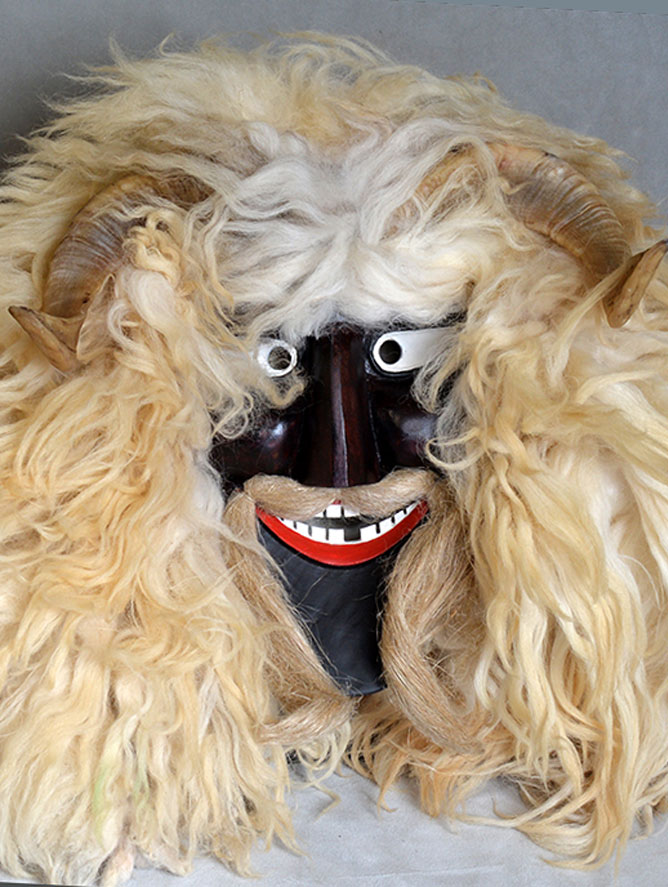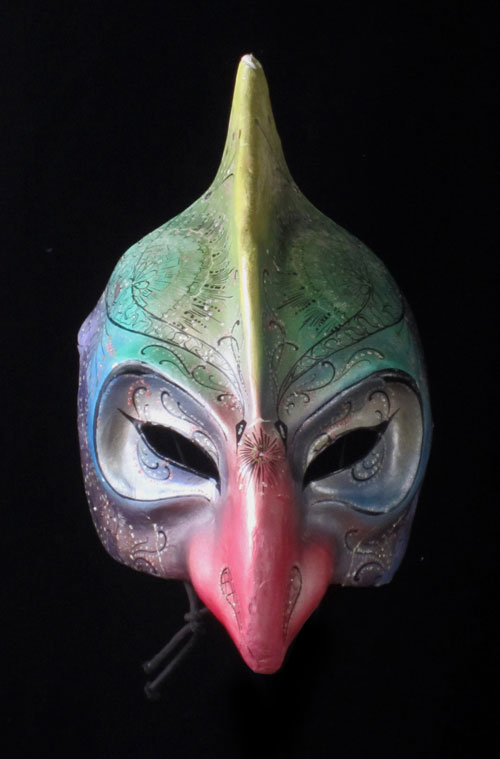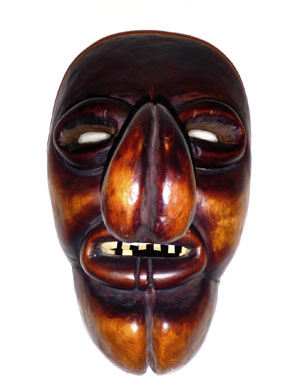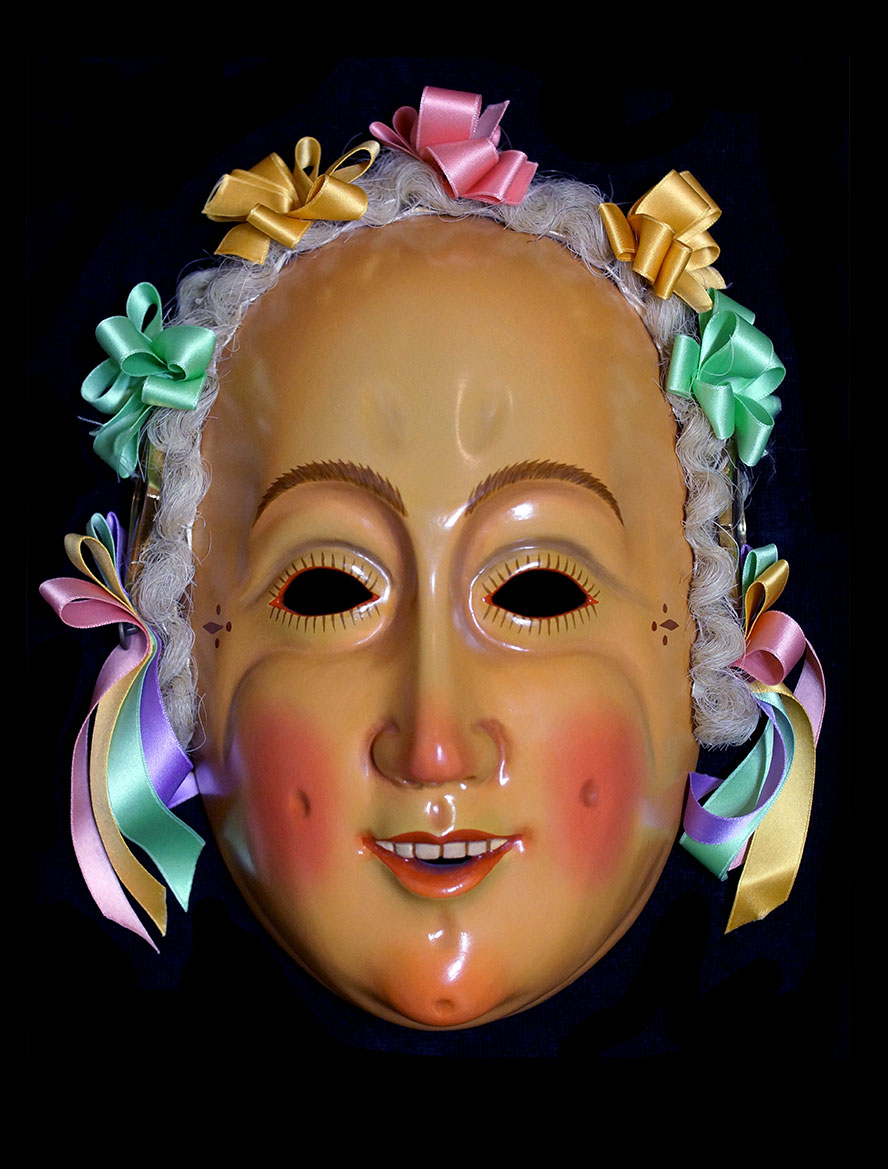Mexican mask collectors know that tigre is what they call a jaguar. Though now extinct, they were once the apex predator in that part of the world. Yellow masks with black dots and sharp teeth are featured in many different dances all around Mexico. Village carvers sell their products to local dancers as well as tourists (who are willing to pay more). The good news for collectors is that the tourists often get the prettier, more creative versions. Mexico is indeed a very artistic culture. Save Save
-
-
Indian mask made of bone
Q: The mask came from an inheritance when my friend died at the Oakville reservation (Chehalis tribe), in Washington. It will be a trade of medicine. We never discussed monetary values… it was a part of her memories of a past pow wow. I am not sure it is even Chehalis or any northwest tribes because she did some travels when she was young. (Montana or southwest), it is pelvic bone , the beads don’t look old and the grass is not brittle, the paint looks new and I am not sure what the teeth are made of. I am looking for a quick sale because I need herbal remedies…
-
Multiple Mahakalas for decor
Q: The masks were purchased from the daughter of a collector who died. The only information she gave me is that the mother traveled the world and always wore a mask. The little information I got on the Internet for the of mask 9 heads is that the Mahakala is a sacred entity of Tibetan Buddhism. But also I found many other names for that entity. Perhaps it was produced in Tibet and made of wood. The size of it is about 40cm tall and 30cm wide. I have a few more of this collection I acquired and still do not have enough information, so I will attach them to…
-
Storing masks can be fun
Q: I just have a quick question about mask storage. I have a small collection of African and Indonesian masks and was wondering about the best way to store them for long term preservation. Do you have any suggestions? Hang them? Put them in boxes? I’d appreciate your feedback. Annabelle, 1027 A: My choice would be to hang them on the wall, especially if the air in your home is fairly well regulated. This way they are easy to inspect and occasionally dust. Best of all, you’ll love the way lots of masks hanging close together can have a decorative effect. Here’s what I did with part of my Mexican…
-
Him and her masks from Puebla
Q: My husband purchased these two Mexican masks, a male and female, online. They did not come with any information other then an old label on the back of the female mask stating Puebla. They seem to be quite old, worn thru in one area on a cheek, and with old repairs to splits. Can you help with information? Kim, 1026 A: This is an unusual pair… both the blue color and underneath-the-eye sight holes are uncommon. But they were made by the same carver somewhere in the Sierra de Puebla Mountains. Definitely old and used. Personally, I love the way they look together. You should purchase a book…
-
Elaborate Dominican masks
The Carnival occurs every weekend in February in the town of La Vega. The Dominican carnivals are supposed to be the first ones celebrated in the New World (even predating the more famous ones in New Orleans and Rio de Janeiro). La Vega is the third biggest city in the Dominican Republic with a long history dating back to the time of Christopher Columbus. The first Dominican Carnival goes back to the 16th century. The Spanish would let their slaves have some fun for a day. The Spanish, however, were very religious and needed the festival to have some sort of religious significance so it became a battle of good…
-
The Mask Man needs help
Q: any info you can give me on this mask i would appreciate… i collect african masks but i have never come across one like this….. it is aprox 17 inches top to bottom, 11 inches wide. Thank you for your help. Shaun, 1024 A: Though it seems large, with the cushion on the rear it will fit well on the top of an adult head. The dancer can see through the open mouth. It could be a tourist mask… or it could be real. I just don’t know. Please write in with your comments. We now have two comments from readers who at least agree that this is…
-
Buying masks can be tricky
Q: I purchased a hand carved wooden mask in a lot at auction. It appears quite sinister. I am not well versed in masks but after a little research it looks similar to masks from Indonesia (Bali). My wife detests it and doesn’t want me bringing it in our house. Can you assist me in identifying this mask? John, 1023 A: It is a character from the traditional dance dramas of Indonesia, probably made somewhere on the main island of Java, west of Bali. Most serious collectors, such as myself, would agree with your wife. The mask was quickly carved and painted to begin with, then, purposely or accidentally, ruined.…
-
Good books about masks
I often promote my new book, Masks of the World, on this blog. But it’s not the only important book for people who are interested in all kinds of masks. Here are six more that are still in print, with my short comment on each… Masks- Faces of Culture by John Nunley This should be your first choice. It’s big, beautiful, and fascinating to read. The Letts Guide to Collecting Masks by Timothy Teuten After 26 years in print, this inexpensive book can still be a big help to beginning collectors. Masks and the Art of Expression by John Mack Almost as good as John Nunley’s big book. Musee International…
-
The scary Buso from Hungary
Q: I just returned from a trip where I bought several masks. This one is from Gyorgy Prokai from Mohacs. Unlike my other Buso masks I have aquired, this one has the full sheep’s leather hood and is fairly heavy. Anyway, I hope you enjoy this mask. Aaron, 1021 A: The Busójárás is an annual celebration of the Croats living in the town of Mohács, Hungary, held at the end of the Carnival season, ending the day before Ash Wednesday. The celebration features Busós (people wearing traditional masks) and includes folk music, masquerading, parades and dancing. We’re always appreciative of the wonderful artifacts you collect and are willing to share…
